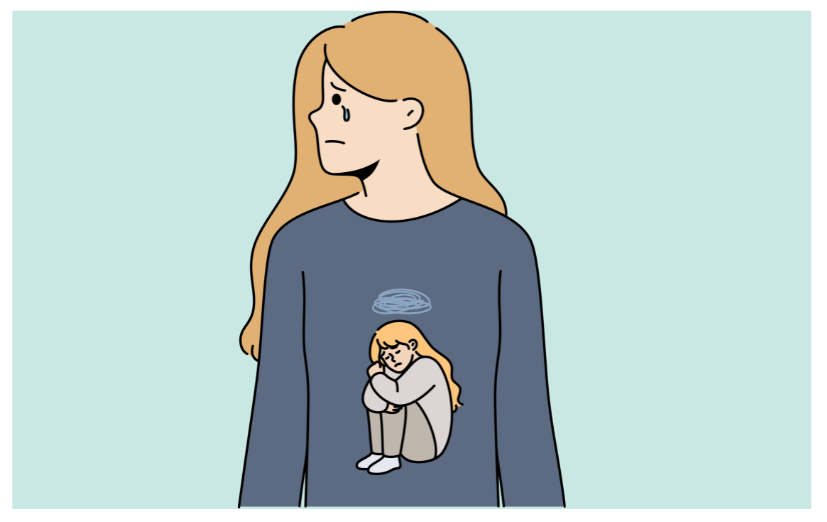Childhood Trauma long lasting effects
Childhood Trauma types, impact and effects as adults
Introduction
In a world where childhood trauma experiences shape, and has an effect in our adult lives, it’s important to understand the impact and effects as adults of childhood trauma. Whether it’s physical, emotional, or sexual abuse, neglect, or the witnessing of violence, these traumatic events can have great impacts on a person’s well-being.
In this blog article, we’ll explore the different types of childhood trauma and focus into the physical and long-lasting effects they can have. To aid our exploration, I have included a table with the types of trauma, the physical effects they can cause, and the lasting impact on the individual. This table will provide a visual representation of the varied consequences of traumatic experiences in childhood.

Understanding the Different Types of Childhood Trauma
Childhood trauma is a term used to describe experiences that can be emotionally distressing or deeply disturbing during the early stages of life.
These experiences have the potential to greatly impact a person’s development, shaping their beliefs, behaviors, and overall well-being. It is crucial to acknowledge and comprehend the various types of childhood trauma in order to effectively address and heal from its effects.
Emotional Abuse
Emotional abuse is one form of childhood trauma that often goes unrecognized. It involves the consistent and deliberate invalidation, humiliation, or manipulation of a child’s emotions. This can include constant criticism, belittlement, or the withholding of affection. The effects of emotional abuse can be long-lasting, leading to low self-esteem, difficulty forming healthy relationships, and a higher risk of developing mental health disorders.
Physical Abuse
Physical abuse involves the intentional use of physical force against a child, causing harm or injury. This can include hitting, punching, kicking, or any other form of physical violence. The physical effects of physical abuse can range from bruises and broken bones to internal injuries and long-term health complications. In addition to the physical harm, physical abuse can also result in emotional trauma, leading to feelings of fear, helplessness, and low self-worth.

Sexual Abuse
Sexual abuse occurs when a child is forced or coerced into engaging in any form of sexual activity. This can include inappropriate touching, exposure to pornography, or forced sexual acts. The physical effects of sexual abuse can be both immediate and long-term. In the short term, physical injuries may occur, such as bruising or bleeding. However, the long-term effects can be even more devastating, including sexual dysfunction, relationship difficulties, and mental health disorders such as post-traumatic stress disorder (PTSD).
Neglect
Neglect is another form of childhood trauma that can have lasting effects on a person’s well-being. It involves the failure of a caregiver to provide the necessary physical, emotional, or educational needs for a child. This can include a lack of food, shelter, supervision, or emotional support. The physical effects of neglect can vary depending on the severity and duration of the neglect. It can lead to malnutrition, stunted growth, poor hygiene, and an increased susceptibility to illness.
The Long-Lasting Impact of Childhood Trauma on Mental Health
Childhood trauma can have a profound effect on a person’s mental well-being, resulting in a variety of psychological disorders and emotional challenges.
These effects can endure well into adulthood if not properly addressed. It is essential to acknowledge and comprehend these enduring impacts in order to offer effective solutions and support for individuals who have endured childhood trauma.
Depression
Depression is a common mental health disorder that can be linked to childhood trauma. The experience of trauma can alter the brain’s chemistry and structure, leading to persistent feelings of sadness, hopelessness, and a loss of interest in activities once enjoyed. Individuals who have experienced childhood trauma may be at a higher risk of developing depression later in life.
Anxiety

Anxiety is another common mental health disorder that can result from childhood trauma. The constant exposure to stress and fear can disrupt the brain’s normal functioning, leading to heightened anxiety and a heightened sense of danger.
Individuals who have experienced childhood trauma may struggle with excessive worry, panic attacks, and difficulty managing stress.
Post-Traumatic Stress Disorder (PTSD)
Post-Traumatic Stress Disorder (PTSD) is a specific mental health disorder that can develop after experiencing or witnessing a traumatic event. Childhood trauma, such as physical or sexual abuse, can lead to the development of PTSD. Individuals with PTSD may experience intrusive memories, nightmares, flashbacks, and intense emotional distress related to the traumatic event.
Dissociation
Dissociation is a coping mechanism that some individuals may develop in response to childhood trauma. It involves a disconnection from one’s thoughts, feelings, and memories as a way to protect oneself from the overwhelming emotional and physical pain associated with the trauma. Dissociation can manifest as feeling detached from reality, experiencing gaps in memory, or having an altered sense of self.
Potential Solutions and Interventions for Childhood Trauma
Addressing and healing from childhood trauma can be a challenging journey, but you don’t have to face it alone. There are numerous potential solutions and interventions available to support you in recovering and moving forward from your traumatic experiences.
It’s crucial to reach out to mental health experts who specialize in trauma-informed care, as they can provide the professional help and guidance you need. Remember, you deserve support and healing on your path to recovery.
Therapy and Counseling
Therapy and counseling are essential tools in the healing process for individuals who have experienced childhood trauma. Various therapeutic modalities, such as cognitive-behavioral therapy (CBT), eye movement desensitization and reprocessing (EMDR), or dialectical behavior therapy (DBT), can help individuals process their trauma, develop coping skills, and improve their overall well-being.

Support Groups
Participating in support groups can provide individuals with a sense of community and understanding. Connecting with others who have experienced similar traumas can be immensely validating and empowering. Support groups can offer a safe space for individuals to share their stories, gain insights, and learn from others who have embarked on a healing journey.
Self-Care Practices
Engaging in self-care practices can play a crucial role in healing from childhood trauma. This can include activities such as exercise, mindfulness, journaling, and creative outlets. Taking care of one’s physical, emotional, and spiritual well-being can help individuals regain a sense of control and empowerment in their lives.
Building Resilience
Building resilience is an important aspect of healing from childhood trauma. Resilience involves developing healthy coping mechanisms, setting boundaries, and cultivating positive relationships. It is about learning to navigate life’s challenges in a healthy and adaptive way.
The Importance of Seeking Professional Help for Childhood Trauma
Seeking professional help is of utmost importance for individuals who have experienced childhood trauma. Trained mental health professionals are here to provide the necessary guidance, support, and evidence-based interventions to assist individuals in their healing process and moving forward. It is essential to remember that healing from childhood trauma is a journey that requires time, patience, and professional assistance.
Comparing Different Types of Childhood Trauma and Their Physical Effects
Understanding the different types of childhood trauma and their physical effects is crucial in recognizing and addressing the impact of these experiences.
I want to provide you with a comparison of the physical effects associated with each type of childhood trauma. This way, you can have a better understanding of the effects and be better equipped to address them. Take a look at the table below for more information:
| Type of Childhood Trauma | Description | Physical Effects | Reference |
|---|---|---|---|
| Witnessing Violence | Observing acts of violence, like domestic abuse or community violence. | Increased risk of aggressive behaviors in adulthood. | 2 |
| Physical Neglect | Failure to provide basic physical needs such as food, shelter, and medical care. | Higher rates of physical health issues like heart disease and diabetes. | 3 |
| Emotional Abuse | Behaviors that harm a child’s self-worth or emotional well-being. | Strong correlation with aggressive behaviors and potential for rapid biological aging. | 2, 3 |
| Physical Abuse | Infliction of physical injury through hitting, kicking, shaking, or other harmful physical actions. | Associated with increased aggressive behaviors and various health problems. | 2, 3 |
| Sexual Abuse | Involvement of a child in sexual acts. | High rates of mental health issues and increased likelihood of physical health problems such as cancer and cardiovascular diseases. | 3 |
Remember, it’s important to approach childhood trauma with empathy and understanding. By being aware of the physical effects, we can work towards healing and supporting those who have experienced trauma.
It is important to note that the physical effects of childhood trauma can vary depending on individual circumstances and the severity of the trauma experienced. Seeking professional help is key in understanding and addressing these effects.
Conclusion
Childhood trauma has a lasting impact on individuals, affecting their mental and physical well-being. By understanding the different types of childhood trauma and their physical effects, we can better support those who have experienced such trauma.
Seeking professional help, engaging in therapy, and practicing self-care are crucial steps in healing from childhood trauma. Let us work together to raise awareness, provide support, and create a safe space for individuals to heal and thrive.
sources:
For further information on childhood trauma and its effects, please refer to the following sources:
Jolanta, Jabłońska-Bonca. (2023). Trauma-Informed Practice in Early Childhood Education. Oxford Research Encyclopedia of Education, doi: 10.1093/acrefore/9780190264093.013.1874


